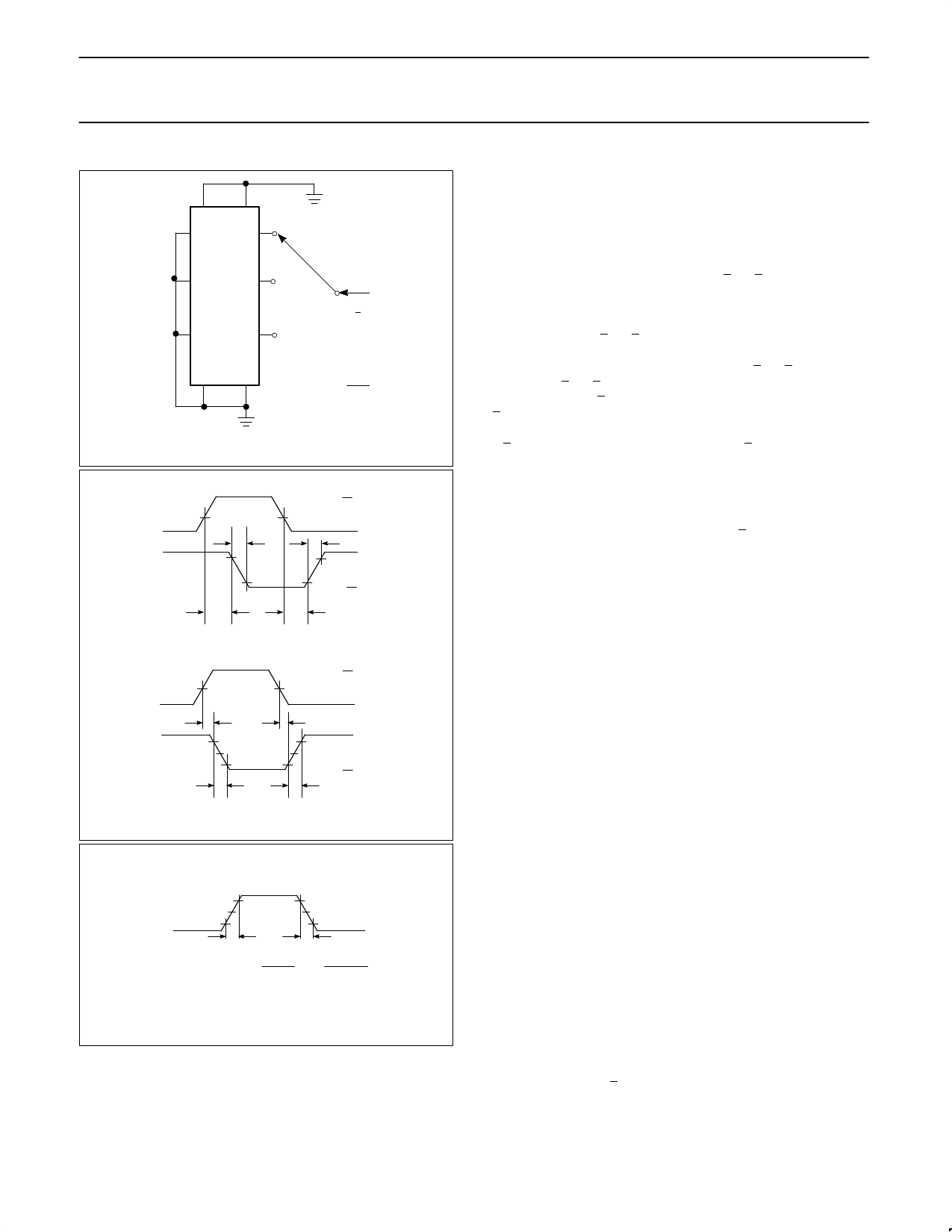MC145406D View Datasheet(PDF) - Philips Electronics
Part Name
Description
Manufacturer
MC145406D Datasheet PDF : 5 Pages
| |||

Philips Semiconductors Linear Products
EIA-232-D/V.28 driver/receiver
Product specification
MC145406
1
VDD
14
DI1
16
VCC
3
TX1
12 DI2
TX2 5
10 DI3
TX3 7
VIN = +2V
VSS
8
9
ROUT
=
VIN
I
Figure 1. Power-Off Source Resistance (Drivers)
DRIVERS
DI1-3
50%
TX1-3
90%
tF
10%
tPHL
tPLH
3V
0V
tF VOH
VOL
RECEIVERS
50%
RX1-3
tPHL
DO1-3 90%
50%
10%
tF
+3V
tPLH
0V
VOH
VOL
tF
Figure 2. Switching Characteristics
DRIVERS
3V
TX1-3
–3V
3V
–3V
tSLH
tSHL
SLEW RATE (SR) = –3V –3V
3V – (–3V)
tSLH OR tSHL
Figure 3. Slew Rate Characteristics
APPLICATIONS INFORMATION
The MC145406 has been designed to meet the electrical
specifications of standards EIA-232-D/CCITT V.28 and as such,
defines the electrical and physical interface between Data
Communication Equipment (DCE) and Data Terminal Equipment
(DTE). A DCE is connected to a DTE using a cable that typically
carries up to 25 leads, which allow the transfer of timing, data,
control, and test signals. The MC145406 provides the necessary
level shifting between the TTL/CMOS logic levels and the high
voltage levels of EIA-232-D (ranging from +3 to +25V).
DRIVERS
As defined by the specification, an EIA-232-D driver presents a
voltage of between +5 to +15V into a load of between 3 to 7kΩ. A
logic one at the driver input results in a voltage of between -5 to
-15V. A logic zero results in a voltage between +5 to +15V. When
operating at +7 to +12V, the MC145406 meets this requirement.
When operating at +5V, the MC145406 drivers produce less than
+5V at the output (when terminated), which does not meet the
EIA-232-D specification. However, the output voltages when using
a +5V power supply are high enough (around +4V) to permit proper
reception by an EIA-232-D receiver, and can be used in applications
where strict compliance to EIA-232-D is not required.
Another requirement of the MC145406 drivers is that they withstand
a short to another driver in the EIA-232-D cable. The worst-case
condition that is permitted by EIA-232-D is a +15V source that is
current limited to 500mA. The MC145406 drivers can withstand this
condition momentarily. In most short circuit conditions the source
driver will have a series 300Ω output impedance needed to satisfy
the EIA-232-D driver requirements. This will reduce the short circuit
current to under 40mA which is an acceptable level for the
MC145406 to withstand.
Unlike some other drivers, the MC145406 drivers feature an
internally-limited output slew rate that does not exceed 30V/µs.
RECEIVERS
The job of an EIA-232-D receiver is to level-shift voltages in the
range of -25 to +25V down to TTL/CMOS logic levels (0 to +5V). A
voltage of between -3 and -25V on RX1 is defined as a mark and
produces a logic one at DO1. A voltage between +3 and +25V is a
space and produces a logic zero. While receiving these signals, the
RX inputs must present a resistance between 3 and 7kΩ.
Nominally, the input resistance of the RX1-3 inputs is 5.0kΩ.
The input threshold of the RX1-3 inputs is typically biased at 1.8V
above ground (GND) with typically 800mV of hysteresis included to
improve noise immunity. The 1.8V bias forces the appropriate DO
pin to a logic one when its RX input is open or grounded as called
for in EIA-232-D specification. Notice that TTL logic levels can be
applied to the RX inputs in lieu of normal EIA-232-D signal levels.
This might be helpful in situations where access to the modem or
computer through the EIA-232-D connector is necessary with TTL
devices. However, it is important not to connect the EIA-232-D
outputs (TX1) to TTL inputs since TTL operates off +5V only, and
may be damaged by the high output voltage of the MC145406.
The DO outputs are to be connected to a TTL or CMOS input (such
as an input to a modem chip). These outputs will swing from VCC to
ground, allowing the designer to operate the DO and DI pins from
the digital power supply. The TX and RX sections are independently
powered by VDD and VSS so that one may run logic at +5V and the
EIA-232-D signals at +12V.
August 31, 1994
471